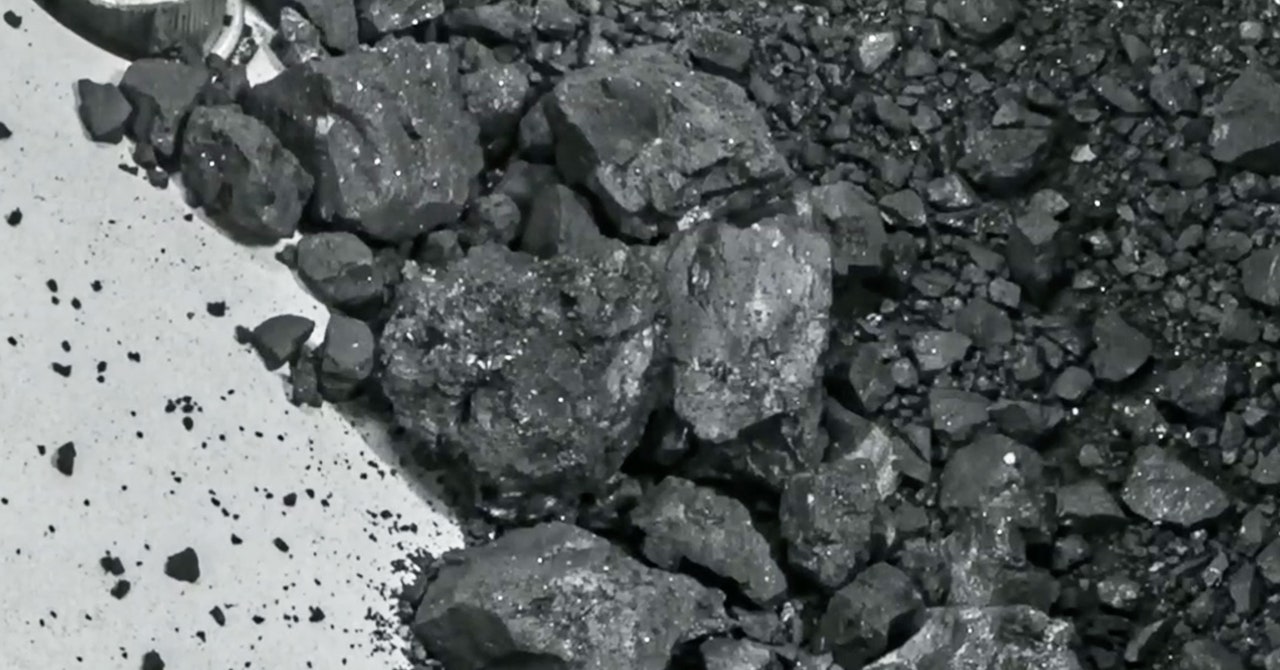
Following him, OSIRIS-REx principal investigator Dante Lauretta showed four more finely detailed images of the sample, all taken by an electron microscope, and spoke more about the significance of carbon. He described the material as water-bearing clay minerals which have water locked inside their fibrous, serpentine crystal structures. “That is how we think water got to the Earth. The reason that Earth is a habitable world—that we have oceans and lakes and rain—is because these clay minerals landed on Earth 4 to 4.5 billion years ago, making our world habitable,” he said. “[And] not just Earth, but probably Venus and Mars.”
As he flipped through the images, he showed how some of the material has a hexagonal shape characteristic of sulfur, which, he said, is critical for biology. “A lot of the amino acids that give structure to our cells use sulfur,” he said. He also showed images of both framboidal (raspberry-shaped) and platelike bits of magnetite. “Those platey ones might be important for organic evolution. They might catalyze certain reactions,” he said.
Daniel Glavin, the OSIRIS-REx sample analysis lead, then showed what it was like to look at a grain of the asteroid material under UV light. Under the light, the sample was bright blue, flecked with tiny white bright spots that he compared to stars. “The stuff’s lighting up,” he said, explaining that the fluorescence indicates carbonate minerals. “This is organic matter, called organic globules. This thing’s loaded with organics.”
The talk also included a prerecorded video from curation scientist Nicole Lunning standing outside a specially-constructed clean room at Johnson Space Center’s Building 31. The building is already home to the largest collection of asteroid materials in the world, and will be the permanent address for the OSIRIS-REx. Because organics are such a focus of this mission, Lunning said, the clean room had been specifically designed to avoid contaminating the sample with biological materials from Earth.
Lunning described much of the material as fine dust and intermediate-size particles, about the width of short-grain rice. She pointed out that so far, NASA has examined only a tiny part of the sample, and they have not yet fully opened the sample container. She said they will continue taking the collection head apart, dividing the sample into handling trays “that look like deep dish pizza dishes.” In six months, she said, the agency will release a sample catalog to give scientists a chance to propose studies and request samples. Some 230 scientists around the world will work on sample analysis for two years, she said, and portions of the samples will go on public display at the Smithsonian, Space Center Houston, and at the University of Arizona.

